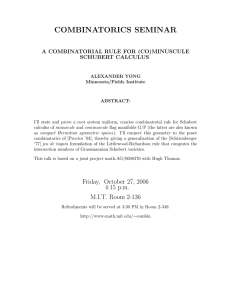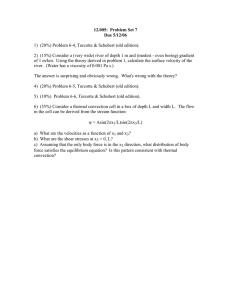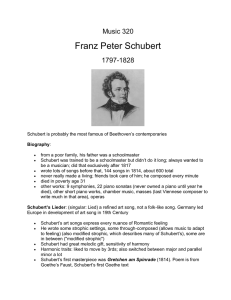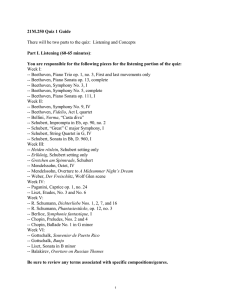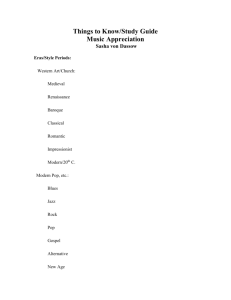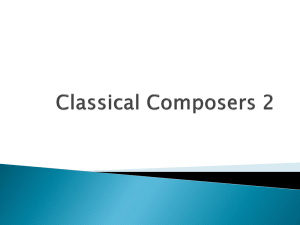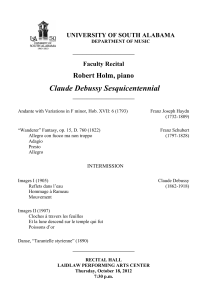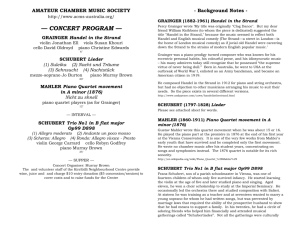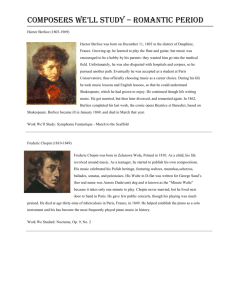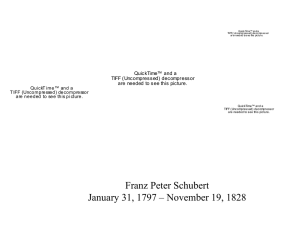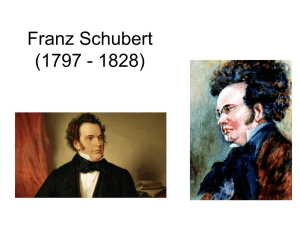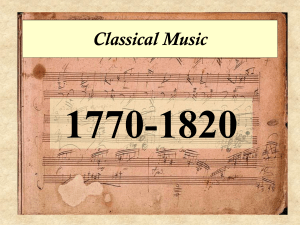FRANZ SCHUBERT Sonata No. 21 in B-‐flat
advertisement
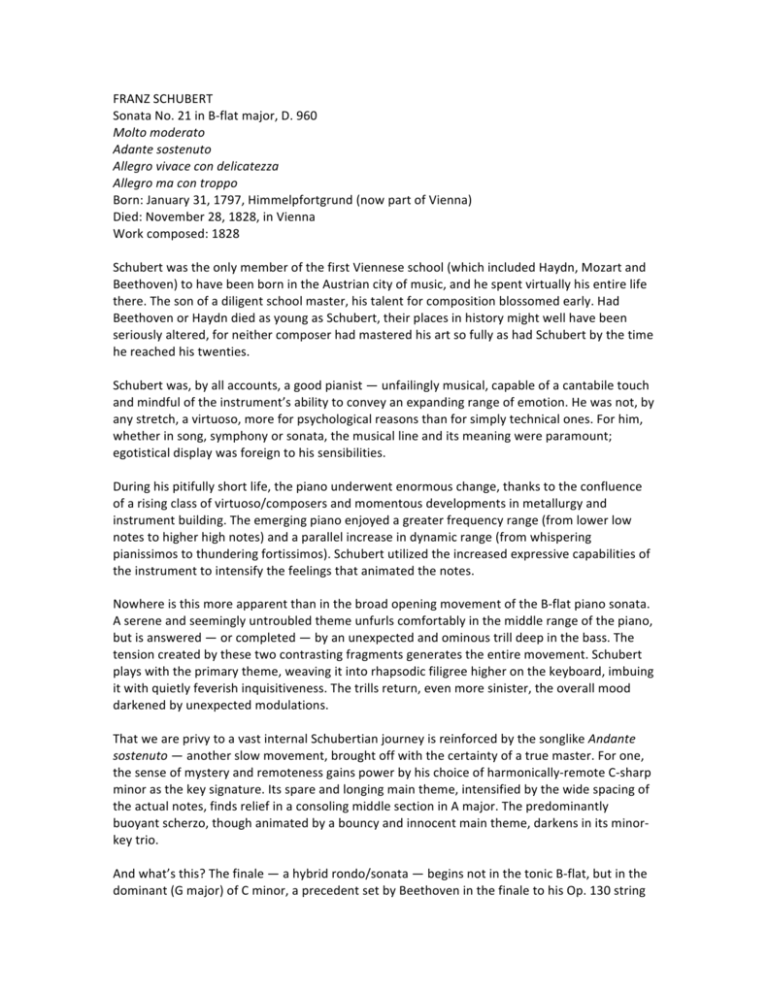
FRANZ SCHUBERT Sonata No. 21 in B-­‐flat major, D. 960 Molto moderato Adante sostenuto Allegro vivace con delicatezza Allegro ma con troppo Born: January 31, 1797, Himmelpfortgrund (now part of Vienna) Died: November 28, 1828, in Vienna Work composed: 1828 Schubert was the only member of the first Viennese school (which included Haydn, Mozart and Beethoven) to have been born in the Austrian city of music, and he spent virtually his entire life there. The son of a diligent school master, his talent for composition blossomed early. Had Beethoven or Haydn died as young as Schubert, their places in history might well have been seriously altered, for neither composer had mastered his art so fully as had Schubert by the time he reached his twenties. Schubert was, by all accounts, a good pianist — unfailingly musical, capable of a cantabile touch and mindful of the instrument’s ability to convey an expanding range of emotion. He was not, by any stretch, a virtuoso, more for psychological reasons than for simply technical ones. For him, whether in song, symphony or sonata, the musical line and its meaning were paramount; egotistical display was foreign to his sensibilities. During his pitifully short life, the piano underwent enormous change, thanks to the confluence of a rising class of virtuoso/composers and momentous developments in metallurgy and instrument building. The emerging piano enjoyed a greater frequency range (from lower low notes to higher high notes) and a parallel increase in dynamic range (from whispering pianissimos to thundering fortissimos). Schubert utilized the increased expressive capabilities of the instrument to intensify the feelings that animated the notes. Nowhere is this more apparent than in the broad opening movement of the B-­‐flat piano sonata. A serene and seemingly untroubled theme unfurls comfortably in the middle range of the piano, but is answered — or completed — by an unexpected and ominous trill deep in the bass. The tension created by these two contrasting fragments generates the entire movement. Schubert plays with the primary theme, weaving it into rhapsodic filigree higher on the keyboard, imbuing it with quietly feverish inquisitiveness. The trills return, even more sinister, the overall mood darkened by unexpected modulations. That we are privy to a vast internal Schubertian journey is reinforced by the songlike Andante sostenuto — another slow movement, brought off with the certainty of a true master. For one, the sense of mystery and remoteness gains power by his choice of harmonically-­‐remote C-­‐sharp minor as the key signature. Its spare and longing main theme, intensified by the wide spacing of the actual notes, finds relief in a consoling middle section in A major. The predominantly buoyant scherzo, though animated by a bouncy and innocent main theme, darkens in its minor-­‐ key trio. And what’s this? The finale — a hybrid rondo/sonata — begins not in the tonic B-­‐flat, but in the dominant (G major) of C minor, a precedent set by Beethoven in the finale to his Op. 130 string quartet. The music moves through many keys, making short and fitful stops along the route, before triumphantly sailing into the home port of B-­‐flat major. A brief and brilliant coda affirms the sense of a safe arrival after a glorious, sometimes troubled, journey.
